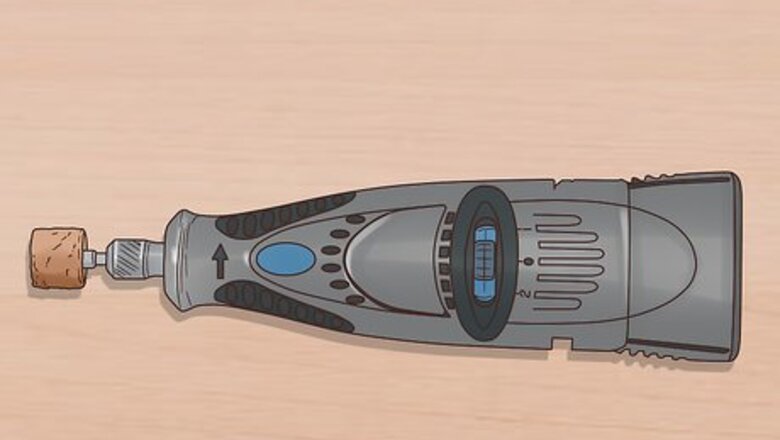
views
X
Expert Source
Ryaan TuttleHome Improvement Specialist
Expert Interview. 13 January 2021.
Once you learn the basics and try your Dremel out on a few projects, you'll quickly come to appreciate this versatile tool.
- Choose the Dremel model that fits your needs. Read the owner’s manual, wear proper safety gear, and ensure the tool is switched off before you plug it in.
- Use the Dremel tool for small cuts and detailing. Secure the object and cut at a speed safe for the material; practice cutting both plastic and metal with the tool.
- Attach a grinding stone to the Dremel to grind materials, or use a sandpaper bit to sand something down. Fit the Dremel with a polishing bit to polish a surface.
Learning the Basics
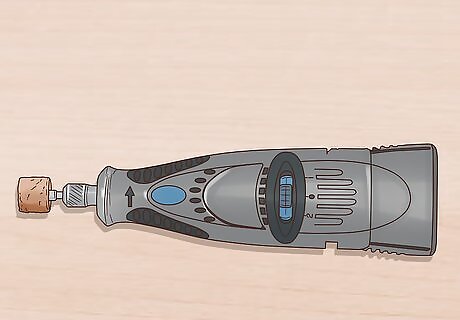
Choose your Dremel. Dremel was one of the first companies to manufacture rotary tools, and it is still best known for these tools. Dremel also produces a number of other types of tools, including powered screwdrivers and scroll saws. Research which tools they're currently selling to find one that fits your needs. The price range varies so it's especially important to find out if you're getting the right tool. Options on Dremels include: Fixed or cordless models Lightweight and mobile, or sturdier and stronger Longer battery life Fixed speed (usually cheaper and easier to use) or variable speed (better for intricate grinding projects and more expensive)

Read the owner's manual. Your Dremel will come with a variety of drill bits and other attachments, the tool, and an owner's manual. Be sure to read the manual before using your Dremel for the first time. This will also help you become familiar with the controls. Find out where the speed controls, on/off switch, and button to change the bit are located. Since your model may be different than a previous year's model, it's important to read the manual that came with your tool.

Wear proper safety gear. Always wear work or rubber gloves when you run the Dremel. Gloves will keep your hands safe from debris and sharp edges. You should also wear safety glasses, especially when cutting, polishing, or grinding with the Dremel. Keep your work space clean. You should also keep children and other people away while you're operating the tool.
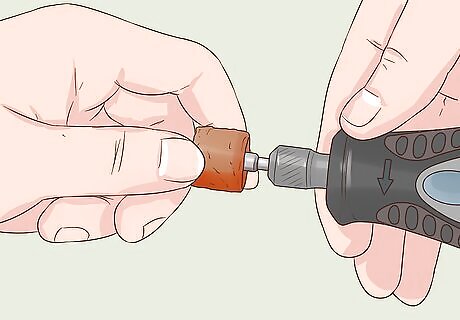
Practice inserting and securing bits. To insert a bit, place the bit into the hole at the end of the Dremel and back it out slightly. Tighten the collet nut so that the bit is secure and doesn't wiggle. To remove the bit, press down on the shaft lock button while turning the collet. This should loosen the bit so you can replace it. Make sure to practice inserting and changing the bit when the Dremel is turned off and unplugged. Some models are equipped with collets designed for quick and easy connection and release. You can also get collets in different sizes for use with different sized accessory shanks. In some cases, you will need to use a mandrel, a type of shank with a threaded head. This is a type of permanent shank for use with polishing, cutting, or sanding bits. Practice inserting bits before turning it on. "I used to just shove bits in, turn it on, and hope for the best. After reading this, I started practicing putting bits in and taking them out with the Dremel unplugged first. It really helped me get the hang of changing them quickly and securely." - Laurence X. Follow speed recommendations for materials. "I was using the same speed for everything. Then I burned out a bit, trying to cut metal at too high a speed. Now, I check the manual for each material's recommended speed range. My projects turn out much smoother." - Joyce S. Grind notches and corners with the right tip shapes. "I used to just use the same grinding tip for everything. After reading about using flat discs for notches and inside corners and cylinder and triangle shapes for rounds, my grinding projects fit together perfectly now." - Lindsay K. Polish metal better with a polishing compound. "I could never get metal to shine up well, even with the polishing tips. Using a polishing compound first made all the difference — I get a nice mirrored finish on metal now." - Keith S. Have a story our readers should hear? Share it with 1 billion+ annual wikiHow users. Tell us your story here.
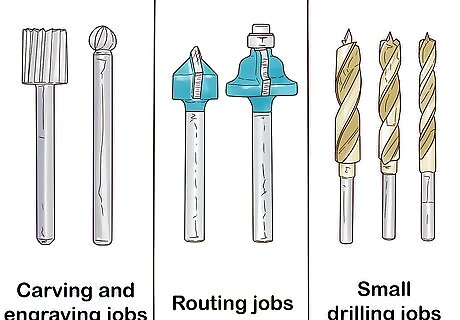
Use the right bit for the job. You should choose your bit attachment based on the type of material you'll be working with. Dremel makes many bits with a variety of materials for almost any material. For example, for: Carving and engraving jobs: use high speed cutters, engraving cutters, structured tooth carbide cutters, tungsten carbide cutters and diamond wheel points Routing jobs: use router bits (straight, keyhole, corner, or groove). When using a router, take care to only use router bits. Small drilling jobs: use drill bits (purchased individually or as a set)
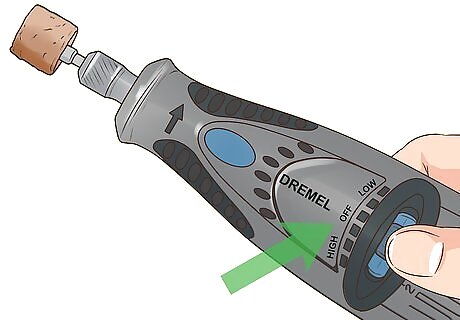
Make sure your Dremel is switched off before you plug it in. Once you plug it in, turn it on to the lowest setting and practice switching to different speeds. To get a feel for the Dremel, try using different grips to hold the tool. For intricate jobs, you might want to hold it like a pencil. Or, for a larger job firmly grip the tool so that your fingers wrap around it. Use clamps or a vice to secure the material you are working on. Check your user's manual to determine the correct speed for the job you have in mind.
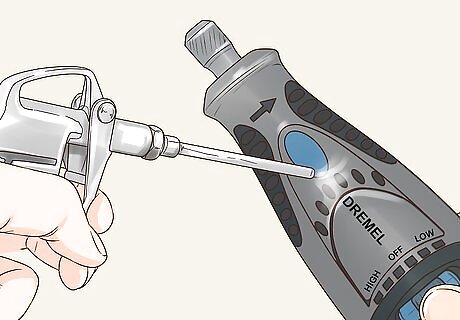
Clean your Dremel after each use. Remove the bit and place the bits back in the case. Take the time to wipe down the drill with a cloth after each use. Keeping your Dremel clean will significantly extend the life of the tool. Consult the owner's manual before disassembling the tool for major cleanings. You will need to frequently use compressed air to clean out the Dremel's air vents. This will help prevent electrical failure.
Cutting With the Dremel

Use your Dremel for small cuts and detailing. The Dremel is lightweight and easy to maneuver, making it deal for small detailing and little cuts. It can be difficult to give smooth, long curves, because you're mostly working free hand. But, you can make several straight cuts to get the kind of edge you're looking for and then even up the edge with the sanding bit. Avoid using the Dremel for long or large cuts that would be better suited to a larger saw.
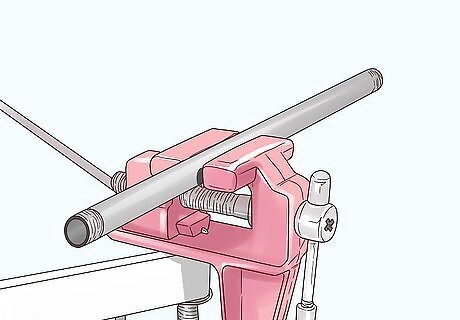
Secure the object. Depending on the object or material you're cutting, secure the object with a vise or clamps. Do not hold the material you're cutting in your hand.

Cut at the appropriate speed for your bit and the material. A speed that is too high or too low can cause damage to your motor, the bit, or the material you're working on. If you're not sure, check your owner's manual to see what speed is recommended for your particular Dremel and material. If you're cutting thicker or tougher material, make several passes to cut it. If the material is too hard and thick to cut without difficulty, you may need to use an oscillating saw rather than a Dremel. If you see smoke and discoloration, your speed is too high. If you hear the sound of the motor dropping or slowing down, you may be pressing too hard. Lighten the pressure and readjust the speed.
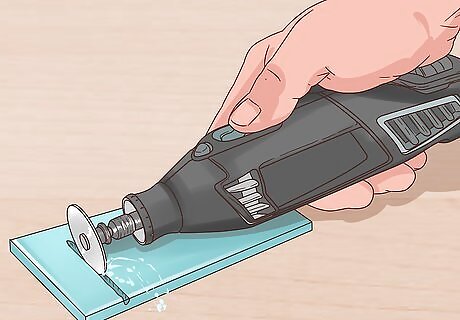
Try cutting plastic. Fit a flat saw blade onto your Dremel. Remember to put on eye and ear protection before you begin cutting the plastic. Set the speed between 4 and 8 so you have enough power, but don't burn out the motor. Sand any rough edges once you've made the cuts. Avoid pressing down too hard while cutting, which can damage your Dremel and your bits. Depending on your project, it may be helpful to draw an outline of your cuts onto the plastic. This will make it easier to ensure your cuts are where you want them to go.
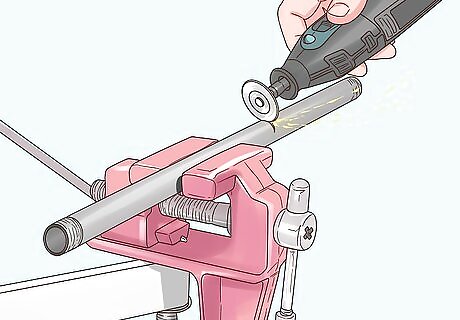
Practice cutting metal. Secure a metal cutting wheel onto your Dremel. Put on eye and ear protection before you start cutting. Turn on your Dremel and set the power between 8 and 10. Make sure the metal you're cutting is affixed firmly in place. Gently touch the Dremel to the metal for a few seconds at a time until you see the metal being cut. You'll also see sparks fly. Fiber reinforced disks are more durable than ceramic disks, which can shatter when cutting metal.
Grinding, Sanding, and Polishing
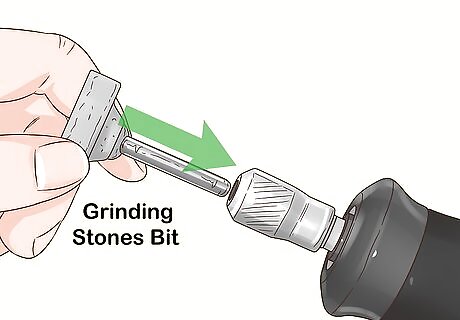
Grind using your Dremel. For grinding, attach grinding stones which can be fixed to the mandrel/shaft. Slide the grinding stone into the front of the tool where it is fully inserted and tighten. Turn your Dremel on and grind on a low setting so you don't overheat the material. Gently hold the grinding stone against the material until it wears down. You can use grinding stones, grinding wheels, chain saw sharpening stones, abrasive wheels and abrasive points to grind a material. Carbide bits tend to work best on metal, porcelain, or ceramic. Use cylindrical or triangular tips for round grinds. To grind a notch into something or grind an inside corner, use a flat disc shape. Or, use cylindrical or triangular tips for round grinds.
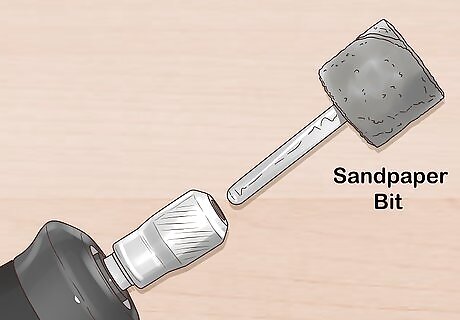
Start sharpening or sanding with your Dremel. Select a sandpaper bit and secure it in your Dremel. Sandpaper bits are available in fine through course grits, and all grades should fit on the same mandrel. Tighten the screw at the end of the sandpaper bit. Turn on your Dremel and set it between 2 and 10. Choose lower settings if you're sanding or polishing plastics or woods. Select a higher setting if you're sanding metal. While holding the material secure, run the bit across the material so that the sandpaper bit completely comes into contact with your material and sharpens or sands it. Make sure that the sanding bits are in good shape so they don't scuff or mark your material. They should fit in the drill snugly and shouldn't be worn. Have several sanding bits on hand so you can quickly replace them. To sand, you can use sanding bands, sanding discs, flap wheels, shaping wheels and finishing and detail abrasive brushes.
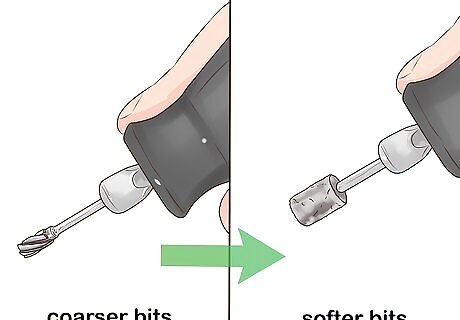
Move from coarser bits to softer bits. If you've got a big job, begin with coarser bits before moving to softer bits. This can help you sand out larger scratches quickly and then you can have more control over working through the material. If you skip the coarse bit and begin with a softer bit, it will take you longer and you'll wear out the softer bit. Check the bit every minute or two to see if the bit is worn or torn. Remember to turn off and unplug the Dremel while you do this.
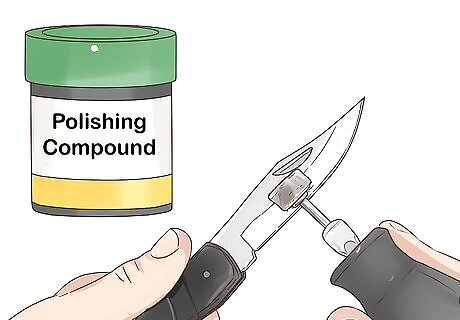
Polish metal or plastics. The Dremel is an excellent tool for fine-detail polishing or polishing in tight spots. Rub a polishing compound over the surface of your object and fit your Dremel with a felt polishing tip or wheel. Start your drill at a low speed (2) and run it against the polishing compound. You should work the wheel in circles until the material is polished. Avoid using a much higher speed (don't go over 4). You can polish without using a compound, but you'll get shinier results with it. For cleaning and polishing jobs, use rubber polishing points, cloth or felt polishing wheels, and polishing brushes. Be sure to get the right kind of coarse polishing brush for the job. These bits are good for taking old paint off of metal furniture or cleaning up tools and grills.




















Comments
0 comment